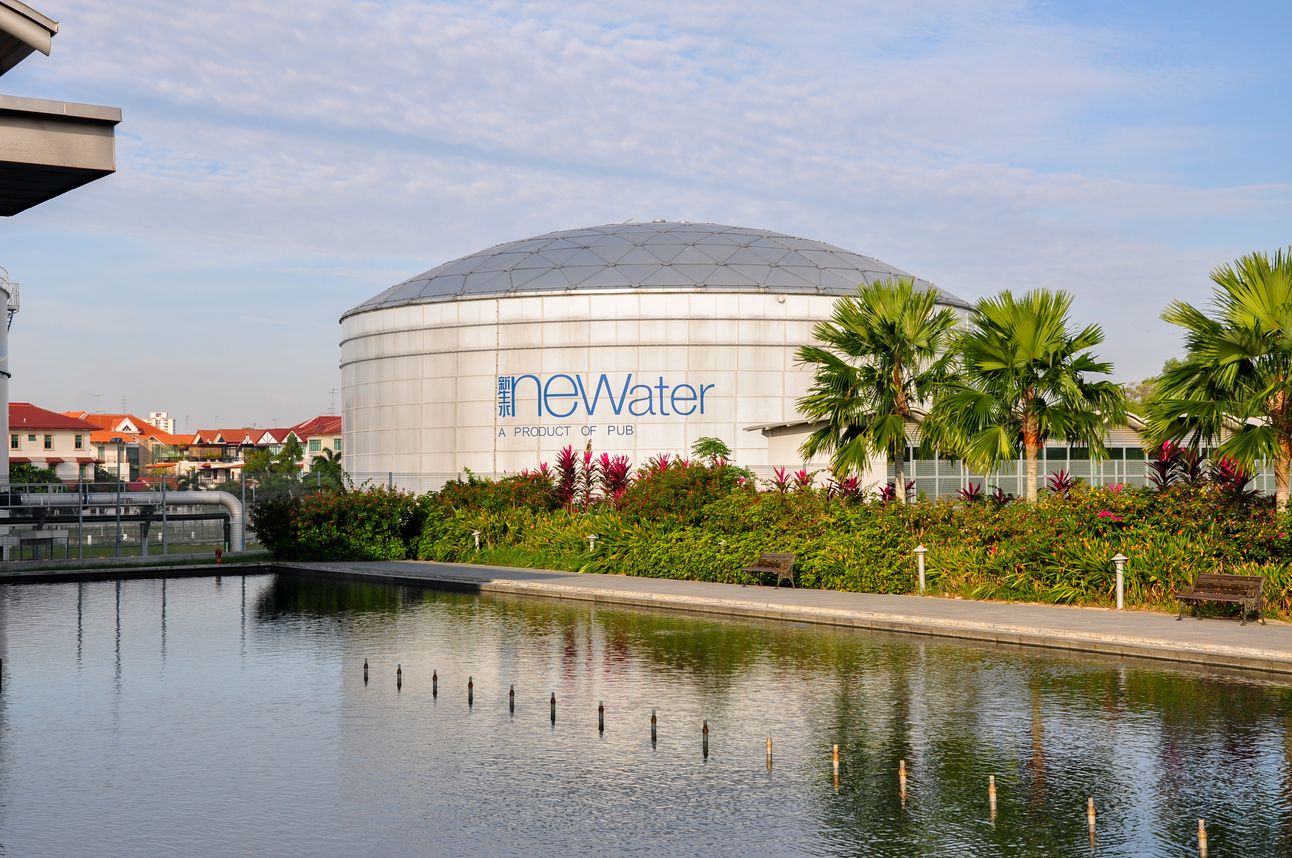It’s not every day that you drink water that once ran through your shower drain. But in Singapore, that’s exactly what millions do—and not with hesitation, but with national pride.
I lived in Singapore from 2002 to 2015. Over those 13 years, I witnessed a transformation not just of skylines, infrastructure, and mobility—but of attitudes towards water. What began as quiet caution about drinking “recycled” water has evolved into widespread celebration of NEWater—Singapore’s high-grade reclaimed water, purified to such a standard that it exceeds World Health Organization drinking guidelines.

Merlion Statue, the official mascot of Singapore located at Marina Bay in Singapore
And frankly, it’s one of the most remarkable public water policy successes anywhere on Earth.
The Problem Beneath the Surface
Singapore has no natural aquifers. Rainfall is plentiful, but storage land is scarce. In 2002, when I first arrived, the city-state was heavily reliant on imported water from neighbouring Malaysia—an arrangement fraught with political tension and an expiry date. As climate scientist Professor Asit K. Biswas once noted, “No other developed country was more vulnerable in its water supply than Singapore.”
It was this vulnerability that gave rise to what we now call NEWater.
Launched in the same year I landed, Singapore’s NEWater programme was not just a technological fix—it was a strategic necessity. And what began with just two plants and cautious public messaging has blossomed into a resilient, decentralised water supply system that now meets up to 40% of the nation’s water demand.
The Science of Safety
What makes NEWater so successful is its triple-barrier approach: microfiltration, reverse osmosis, and ultraviolet disinfection. This rigorous treatment removes bacteria, viruses, and micropollutants—including endocrine disruptors and pharmaceuticals—leaving nothing but ultrapure water.
According to PUB, Singapore’s national water agency, over 20,000 scientific tests are conducted annually to monitor NEWater quality. Independent research has consistently confirmed its safety. A 2020 review published in Water Research stated that Singapore’s system represented “a global benchmark for potable reuse,” lauded for both its technical excellence and public trust.
But trust doesn’t just arrive in a beaker. It’s earned.
Winning Hearts Before Faucets
Recycling wastewater—no matter how pure—was always going to face the “yuck factor.” In my early years in Singapore, the government rolled out careful public education campaigns, school tours to the NEWater Visitor Centre, and even bottled the stuff for distribution during National Day Parades.
I still remember my first sip. Cold. Crisp. Unremarkable in taste—and yet profoundly symbolic.
Tim Smedley, in his book The Last Drop, observes that the true water crisis isn’t scarcity—it’s shortsightedness. Singapore, in contrast, saw long. And what it saw was a future where water security could be engineered, quite literally, from waste.
Innovation on Tap
NEWater is just one part of Singapore’s “Four National Taps” strategy: local catchment, imported water, desalination, and recycled water. Each is designed to complement the other, creating a robust, climate-resilient mix. By 2060, PUB aims for NEWater and desalination to meet 85% of total water demand.
Desalination, once cost-prohibitive, is also undergoing a quiet revolution. The latest Tuas plant employs electro-deionisation and smart energy recovery systems, reducing the once-high energy costs of salt removal. According to Dr Cecilia Tortajada, senior research fellow at the Lee Kuan Yew School of Public Policy, “Singapore’s approach is not just to import solutions, but to integrate and iterate them.”
This ethos shows. The country now exports water technologies to over 20 nations and hosts the annual Singapore International Water Week, a magnet for global water innovators.

NEWater treatment plant in Changi, Singapore.
What the World Can Learn
In Britain, we talk increasingly about drought resilience and wastewater reuse. Yet public resistance persists, often rooted in perception rather than science. We complain about rain while pouring treated water onto lawns, flushing it through loos, and watching billions of litres leak through ageing pipes.
Contrast this with Singapore, where even stormwater is collected in urban drains and channelled into reservoirs. Where toilets are often dual-flush and building codes mandate water-saving fittings. Where the same drop of water is reused, respectfully, again and again.
As I reflect on my years in Singapore, I think often of the quiet logic behind its transformation: Plan long. Reuse smart. Build trust. These aren’t just slogans. They’re survival strategies in a century when water stress will define so much of our shared destiny.
Beyond the Horizon
Singapore still imports water. It still faces rising demand, energy costs, and climatic uncertainty. But the island-state has done something few others have: It has made water central to its identity, not just its infrastructure. And in doing so, it has turned one of the world’s oldest anxieties—scarcity—into one of its greatest modern strengths.
Dr Leong Chee Chiew, PUB’s former chief sustainability officer, once put it bluntly: “In Singapore, every drop counts. Because every drop was hard won.”
Back in 2002, I might have walked past a storm drain without thinking twice. By 2015, I knew better. That drain wasn’t waste—it was a beginning.




